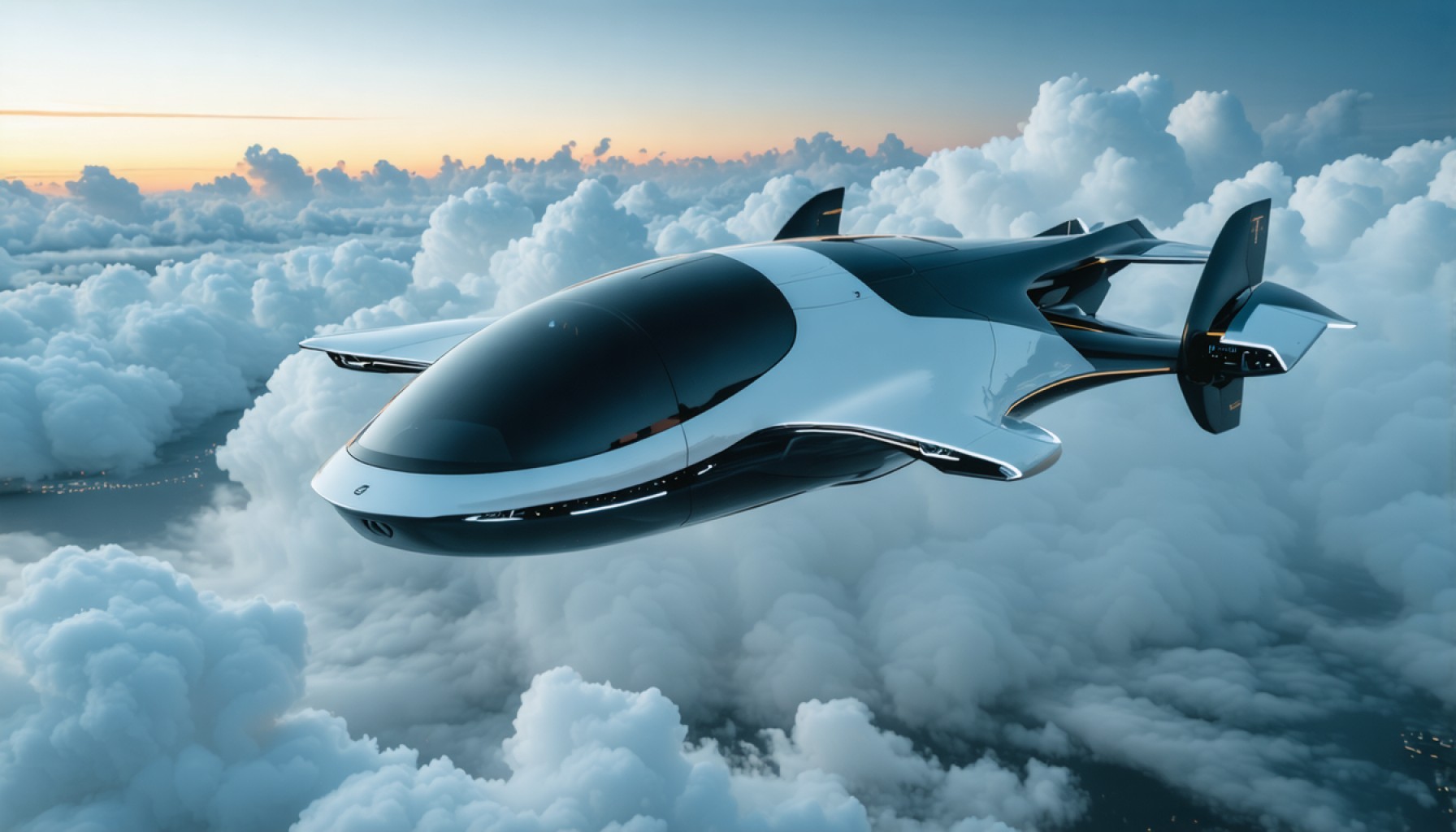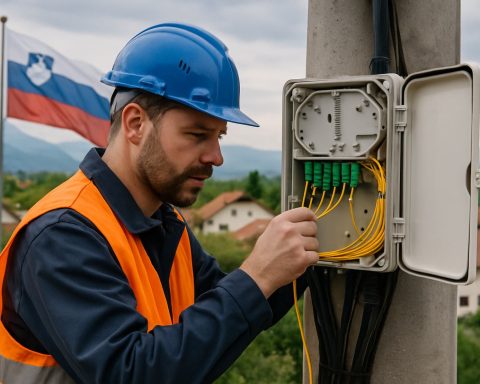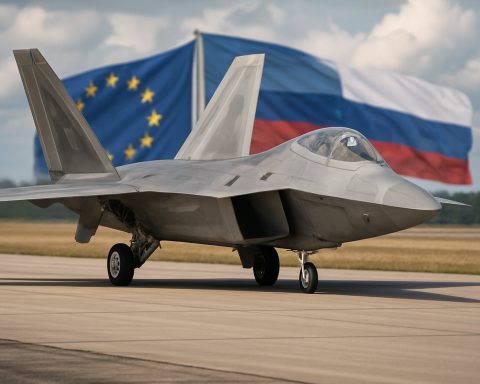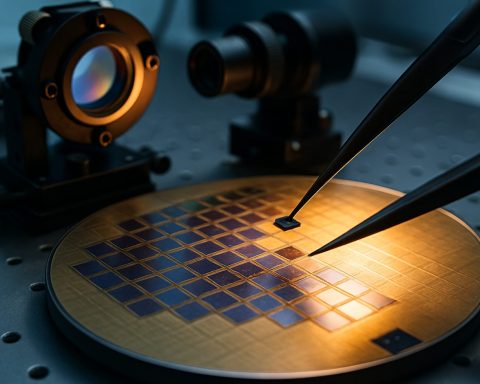- XPeng Motors is set to launch flying cars by 2026, aiming to become a pioneer in mass-producing these vehicles, facilitated by China’s thriving low-altitude economy.
- The company is integrating advanced vehicle control systems with artificial intelligence to ensure safe and user-friendly flying car operations.
- XPeng is progressing in autonomous driving, planning to unveil Level 3 autonomous vehicles this year and Level 4 capabilities by 2026.
- In robotics, XPeng is developing Level 3 humanoid robots, aiming for moderate-scale production by 2026, to enhance everyday life and work.
- The company’s initiatives highlight a seamless blend of technology and innovation, pushing boundaries in transportation and beyond.
Amid the grandeur of Beijing’s Great Hall of the People, the future of transportation is being rewritten. Surrounded by the buzz of anticipation, He Xiaopeng, the visionary chairman of XPeng Motors, unveiled an audacious plan: flying cars to take to the skies by 2026. This ambition places XPeng at the forefront of a revolution, as the company accelerates efforts to make this once fantastical concept an everyday reality.
In the lively corridors of the 14th National People’s Congress, Xiaopeng shared a future shaped not only by wheels on the ground but wings in the air. XPeng Motors aims to become the first global pioneer in mass-producing flying vehicles, a bold statement catalyzed by China’s burgeoning low-altitude economy and favorable policy winds. These flying cars promise more than just elevation—they symbolize humanity’s ever-striving quest to transcend traditional boundaries.
The magic of this transformation lies in the synergy between advanced vehicle control systems and artificial intelligence. XPeng’s engineers are crafting an innovative flight control system designed to ensure both safety and ease of use for the everyday pilot. It’s a blend of science fiction and cutting-edge technology, poised to alter our concept of mobility.
Simultaneously, XPeng powers forward with electric vigor in the realm of autonomous driving. The company is making significant strides toward rolling out Level 3 autonomous vehicles, which are expected to surpass existing global technologies this year. Not stopping there, by 2026, XPeng aims to introduce Level 4 capabilities, where cars will navigate roads—and parking lots—fully autonomously, fundamentally transforming the way we interact with our vehicles.
Yet, XPeng’s innovations are not confined to transportation. On the cusp of another technological frontier, the company is investing in the development of humanoid robots. The Chinese robotics industry is advancing rapidly, with XPeng positioned to introduce Level 3 robots capable of operating independently under many scenarios. By 2026, these humanoid companions are anticipated to enter moderate-scale commercial production, adding a new dimension to everyday life and work.
This confluence of discoveries and innovations is not merely technological; it speaks to the deeper drive of what is possible when imagination meets engineering excellence. As XPeng Motors pushes boundaries, it invites a broader reflection: We stand on the threshold of new horizons, where the air may soon be as navigable as the open road, and technology seamlessly integrates into the fabric of daily life.
XPeng’s journey is a testament to bold aspirations and visionary leadership, reminding us that the future is not merely awaited—it is actively created.
The Future of Transportation: XPeng Motors’ Vision for Flying Cars by 2026
Introduction
In a remarkable reveal at Beijing’s Great Hall of the People, He Xiaopeng, the chairman of XPeng Motors, announced an ambitious vision for the future of transportation. By 2026, XPeng plans to mass-produce flying cars, transforming the concept from science fiction into reality. Positioned at the forefront of this transformative journey, XPeng’s ambition is fueled by advancements in vehicle control systems, artificial intelligence, and the burgeoning low-altitude economy in China.
The Flying Car Revolution
Features and Advancements
XPeng is integrating cutting-edge technology with their flying vehicles, aiming for seamless travel with enhanced safety and usability. Key features include:
– Advanced Flight Control Systems: Ensures ease of use, making flying cars accessible for everyday users.
– Artificial Intelligence Integration: Enhances navigation and safety, utilizing data-driven decisions for efficient air travel.
Real-World Use Cases
– Urban Mobility: Flying cars could reduce commute times significantly in heavily congested cities.
– Emergency Services: Rapid deployment of services in inaccessible areas could be transformative for disaster response.
Market Forecast and Industry Trends
The flying car market is poised for growth, with the global market expected to reach $14 billion by 2040, driven by technological advancements and increased urbanization (Morgan Stanley).
Autonomous Driving Advances
Level 3 and 4 Capabilities
– Level 3 Vehicles: XPeng aims to surpass current technologies with vehicles that can autonomously handle specific situations by the end of the year.
– Level 4 Vehicles by 2026: Cars will manage all driving tasks, including navigation and parking, revolutionizing personal transportation.
Robotics: The Next Frontier
Humanoid Robots
XPeng is also venturing into robotics, with plans to introduce Level 3 humanoid robots by 2026 capable of independently performing various tasks. These robots could streamline work environments and assist in everyday chores.
Challenges and Limitations
Regulatory Hurdles
Flying cars and autonomous vehicles must adhere to stringent safety and regulatory standards before becoming widely adopted.
Technological Barriers
– Safety Assurance: Ensuring vehicles respond accurately in all scenarios.
– Infrastructure Adaptation: Urban areas need to adapt to support air traffic and autonomous operations.
Recommendations and Tips
– Stay Informed: Follow industry updates to stay ahead of emerging trends.
– Evaluate Readiness: Consider infrastructure upgrades to accommodate new technologies.
– Explore Opportunities: Businesses should explore how flying cars and autonomous tech could integrate into their operations.
Conclusion
XPeng Motors is not just envisioning the future; it’s actively shaping it. From flying cars to autonomous vehicles and advanced robotics, the company is leading a technological revolution. By 2026, your daily commute could look very different, with the skies as navigable as roads and robots offering a helping hand in daily tasks.
For more insights into technological advancements, please visit XPeng Motors.







